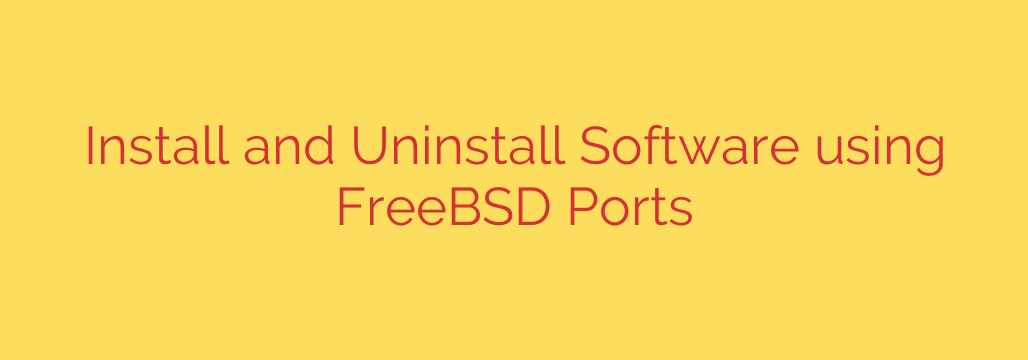
Mastering software management on FreeBSD is essential, and the Ports collection offers a powerful and flexible method for installing applications directly from source code. Unlike package managers that fetch pre-compiled binaries, Ports allows you to compile software specifically for your system, often enabling customization options during the build process.
The journey begins in the main ports directory, typically located at /usr/ports. To ensure you have access to the latest software versions and security updates, the first critical step is to update your Ports tree. This is commonly done using the portsnap utility or, if you’re managing your system with Git, by pulling updates from the repository. Keeping the Ports tree current prevents issues with outdated dependencies and ensures you’re building the most recent stable releases.
Finding the software you need within the vast Ports collection is straightforward. You can navigate through the categorized directory structure within /usr/ports, or more efficiently, use the make search command from within the /usr/ports directory or a specific category. Searching helps you locate the desired software port’s directory path.
Once you’ve identified the port directory (e.g., /usr/ports/category/application-name), you’ll navigate into it using the cd command. Before building, many ports allow you to configure options using make config. This step opens a dialog or uses environment variables to select features, dependencies, or build flags tailored to your needs. It’s highly recommended to run make config before installation, especially for complex applications.
To install the software, you simply run the command make install clean. The make install part initiates the compilation and installation process. The clean target, often added for good practice, removes the temporary build files after installation, saving disk space. The Ports system automatically handles dependencies, building and installing any required libraries or utilities that are not already present on your system. This ensures all prerequisites are met before the main application is installed.
Successfully installed applications are registered with the system, allowing for easy management. When it comes time to remove software installed via Ports, the process is just as simple. Navigate back to the specific port’s directory within /usr/ports and execute the command make deinstall. This command removes the installed files and updates the system’s record of installed software. You might also consider make clean again after deinstallation to remove any lingering build artifacts.
Using the Ports collection provides granular control over your installed software, allowing for custom configurations and ensuring compatibility with your specific FreeBSD environment. It’s a fundamental tool for advanced users and system administrators managing FreeBSD systems.
Source: https://kifarunix.com/install-or-uninstall-software-from-freebsd-ports-collection/








